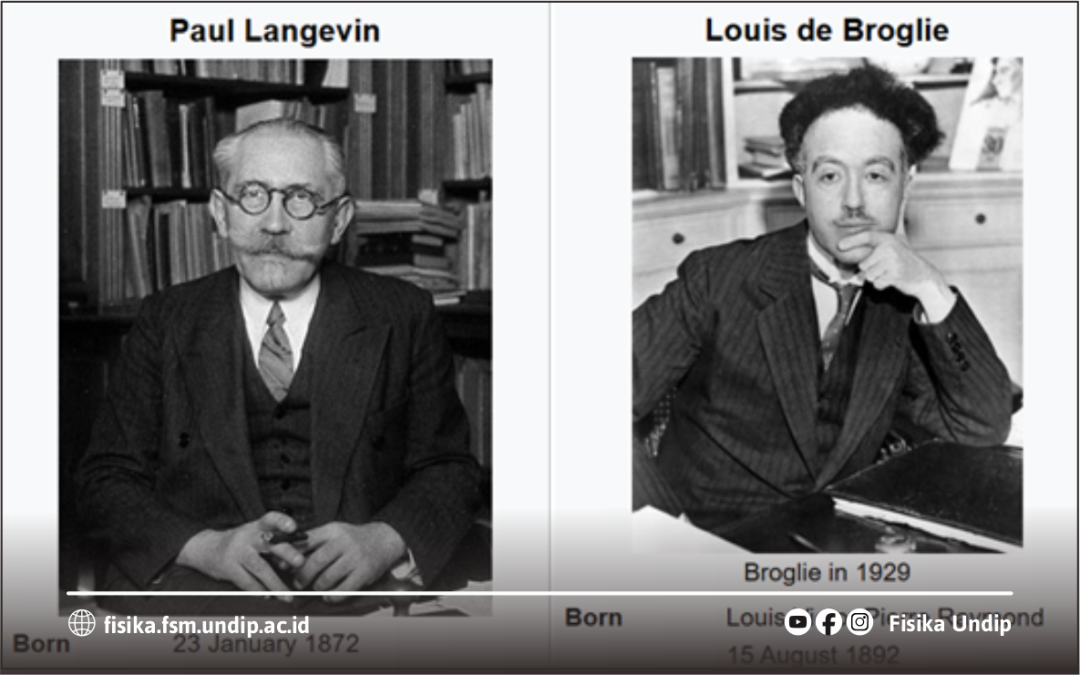Note: Muhammad Nur
Initially, the prince wanted to become a writer. Born into a distinguished French noble family, Louis de Broglie came from a lineage of notable scholars. His grandfather, father, and older brother were all members of the prestigious French Academy. Louis de Broglie earned his first degree in history. As a young man, he had already obtained a degree in history and was preparing for a higher diploma in literature. It seems, however, that science is also a form of high art. He read Henri Poincaré’s works on chaos theory, was deeply impressed, and decided to pursue science. He envisioned a career in the natural sciences. He earned his degree in science in 1913 and continued his research in a private laboratory founded by his older brother, Maurice de Broglie. When World War I broke out in 1914, Louis joined the military, serving as a radio communication developer and operator during the war from 1914 to 1918.
After the war, Louis de Broglie resumed his studies, choosing the field of physics. At that time, the nobility in Europe were often well-versed in both mathematics and the arts, so transitioning from literature to “the literature of nature” was not so difficult. Louis had a keen interest in the experimental physics work conducted by his brother, Maurice. He attempted to explain his brother’s findings, realizing that experimental physics required theoretical explanations. Thus, the de Broglie brothers formed a complementary partnership. Louis focused on the quantization of waves and developed the idea of considering particles as having wave-like properties.
Mentorship by Paul Langevin
Paul Langevin, a renowned mentor who guided three Nobel laureates—Pierre Curie, Joseph John Thomson, and Gabriel Lippmann—became Louis de Broglie’s advisor when he began his doctoral dissertation in 1919. Langevin’s expert guidance led Louis de Broglie to complete his dissertation on quantum theory. In 1924, at the Faculty of Sciences at the University of Paris, Louis defended his dissertation “Recherches sur la Théorie des Quanta” (Research on Quantum Theory), earning his doctoral degree. The dissertation, which outlined a series of important findings from his research over the previous two years, proposed that moving objects exhibit wave-like properties in addition to their particle characteristics. This was a groundbreaking idea at the time. The theory was confirmed in 1927 by the electron diffraction experiments conducted by Davisson and Germer. Their experimental results validated de Broglie’s theory and led to him being awarded the Nobel Prize in Physics in 1929. De Broglie was the fourth of Langevin’s mentees to receive the Nobel Prize, though Langevin himself never received the prestigious award, despite being nominated multiple times.
Legacy and Recognition
Louis de Broglie, a professor at the Faculty of Science in Paris, was the first recipient of the Kalinga Prize from UNESCO in 1952, in recognition of his efforts to popularize science. Among his published works are Matter and Light, Continuity and Discontinuity in Modern Physics, Waves, Corpuscles, and Wave Mechanics: Physics and Micro-Physics, New Perspectives in Micro-Physics, On the Path of Science, and Certainty and Uncertainty in Science.
Louis de Broglie, a veteran of World War I, was awarded the Grand Cross of the Legion of Honor for his contributions during the war. In 1945, he was appointed as an advisor to the French Atomic Energy Commission. He received honorary doctorates from many universities worldwide, including those in Warsaw, Bucharest, Athens, Lausanne, Quebec, and Brussels. It is curious that such an esteemed figure as Louis de Broglie did not receive an honorary doctorate from any university in France. His reflections as a “literary physicist” led to the development of many modern technologies, one of which is the electron microscope.

